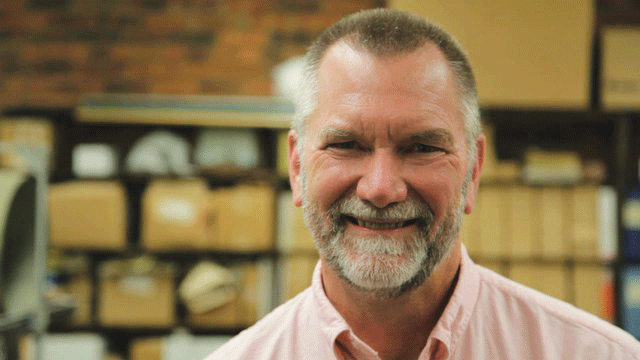Dr. Eric Blinman on the Possible Damage Archaeology Can Have on Native American Identity
Dr. Eric Blinman focused his lecture on the history that has led to the possible damage of Native American identity. Blinman also takes the time to explain the weaknesses that are seen in different archaeological models.
Before welcoming guest speaker Dr. Eric Blinman to the podium Monday, February 19, English Professor Sarah Wider from Colgate’s Native American Studies program reminded students and professors that Colgate is built on what was historically land belonging to the Oneida Indian Nation. Accordingly, ancestral homeland was a key topic of Blinman’s talk in Persson Auditorium, “Collateral Damage: How the Inherent Weaknesses of Archaeology Can Damage Native American Identity.”
Blinman, who serves as director of archaeological studies at the Museum of New Mexico, began with an explanation of a fundamental principle of archaeology.
“Archaeology is a science only because our stories are intended to be criticized. Archaeology is not necessarily right; we can only propose models. We can’t prove them,” Blinman said.
Blinman then succinctly but thoroughly established the complex history that has led to ongoing dilemmas of identity amongst Native American peoples. In the past, he explained, the complex histories of at least five Native American groups in the Four Corners region of the United States, the area formed by the corners of the Colorado, Utah, Arizona and New Mexico state border lines, were simplified into a single, incomplete history of “Puebloan” peoples that treated the distinct groups as one.
This history disregards tribal, linguistic and geographic distinctions among the groups for the sake of expediency. This model has been critiqued and new models were proposed to replace it. Blinman noted that this represents a general trend in archaeological studies in which new models are proposed and critiqued in order to come closer to the truth.
Blinman argued that the inherent weakness of archaeology is that no single model can ever be absolutely true because archaeological evidence is insufficient to make infallible claims.
The Native American Graves Protection and Repatriation Act (NAGPRA) was enacted in 1990 “to address the rights of lineal descendants, Indian tribes and Native Hawaiian organizations to Native American cultural items, including human remains, funerary objects, sacred objects, and objects of cultural patrimony.”
The repatriation of these objects relies on demonstrated cultural affiliations between Native American groups and the objects in question. Because there is usually no written evidence to verify claims, archaeological evidence could be used to support claims of cultural affiliation. Yet because archaeological evidence is constantly being critiqued and revised, it is not a firm foundation for the demonstration of cultural affiliation. Archaeological evidence inevitably comes into conflict with established oral histories and identities in ways that create problems in precisely the places it is intended to solve them. This means that archaeology may actually pose a threat to Native American identities.
Archaeological evidence has also been used to demonstrate which Native American groups are historically affiliated with specific regions. The recognition of native lands is integral to Native American identities, but the scarcity of historical evidence to support claims to ancestral lands means that Native American groups sometimes cite archaeological evidence to support its claims.
To illustrate this, Blinman provided the example of the Mesa Verde region in Colorado. Claims to this region have long been a subject of debate among a few Native American groups, but in 2012 anthropologist Scott Ortman published the book Winds from the North: Tewa Origins and Historical Anthropology, which seeks to demonstrate through archaeological evidence that the Tewa people were the most likely Native American group to have grown out of the Mesa Verde region. Since the publication of this book, some of the Tewa people have claimed the Mesa Verde region as a core aspect of their history. But as Blinman warns, “What [Ortman] is proposing is a model. It isn’t history. He is forgetting that his concepts of history can actually have implications that are serious.”
Blinman explained that archaeological evidence has not yet had any significant impact on repatriation decisions such as NAGPRA but has significant implications for Native American identity.
Senior James Goldin explained that Blinman’s talk touched on the root of his interest in archeology.
“[I am fascinated with] the idea of archaeology being at constant competition with what people claim to be the truth. Blinman’s talk highlighted how oral tradition, artifacts and contemporary discussions can come together to shed new light on Native American history,” Goldin said.
Sophomore Ally Feldman felt that Blinman’s talk challenged her ideas about how faith holds up to science.
“I was inclined to agree with Blinman’s view that even the study of archaeology should not overpower the tradition and beliefs of stories that have been passed down for a thousand years. I think there’s inherent conflict in that, because I’ve always been taught to believe science and evidence over faith and stories, but I think the great thing about studying other cultures that place emphasis on different aspects of learning is that it forces me to reconsider what counts as fact,” Feldman said.
Contact Luke Felty at [email protected].







